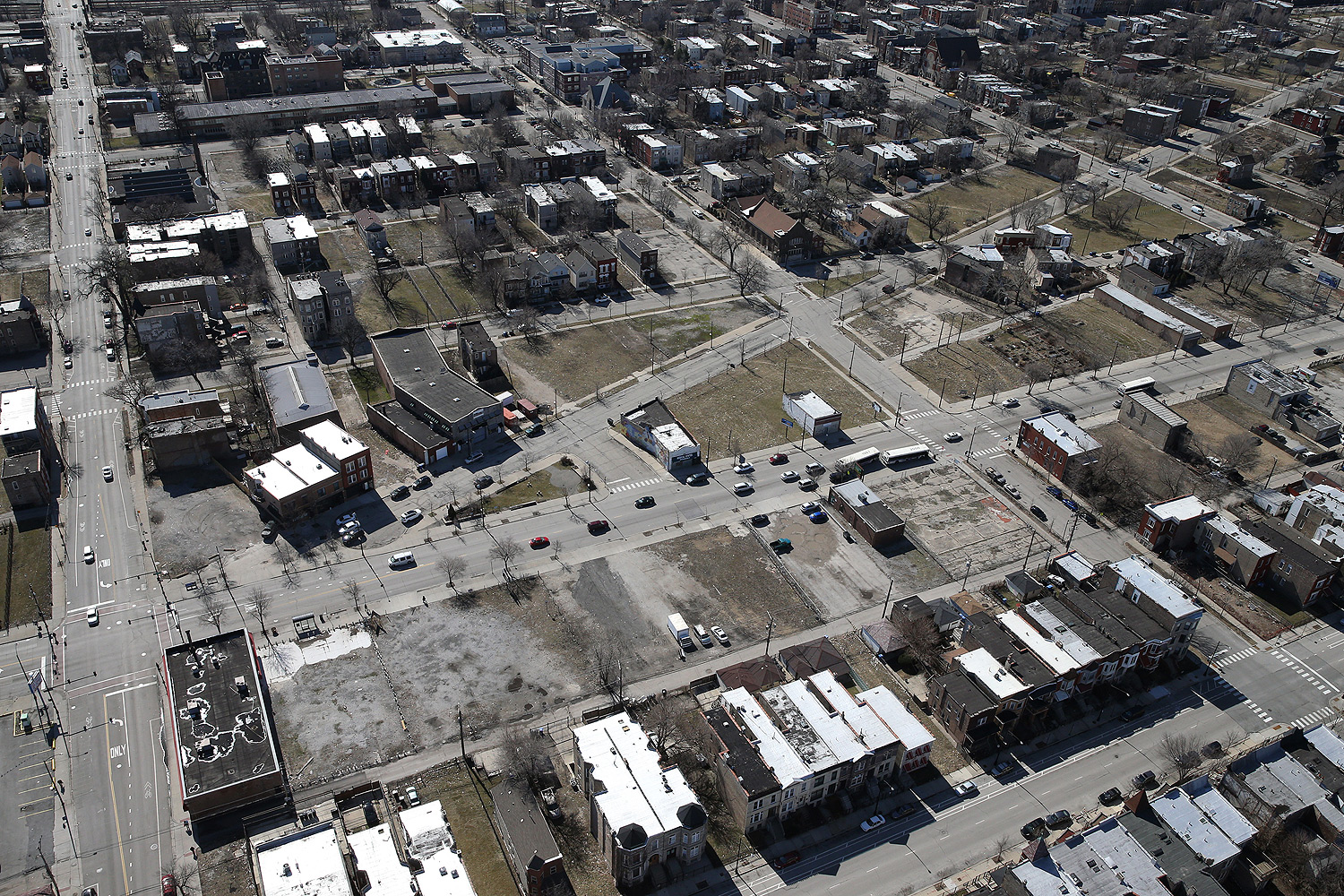Yesterday's piece by Kim Bellware about a potential relationship between ward boundaries, violence, and political representation reminded me of a small but interesting nuance about the West Side riots of 1968 following the death of Martin Luther King, Jr.
There were other flares of violence that week, but the bulk of the damage was done on the West Side along the commercial corridor of Madison Street, as the Tribune's thorough recounting demonstrates. It also describes what the West Side was at the time and why people were moving there:
In the 1950s and 1960s, the West Side was a new frontier for blacks migrating from the South.
It was considered a vibrant area filled with jobs and opportunity. After all, it was home to Sears, Roebuck and Co. and Ryerson Steel. International Harvester was due south and General Electric was in nearby Cicero. Businesses were plentiful and prosperous, and retail arteries like Madison and Roosevelt fed a thriving economy.
This newer wave meant that the black community on the West Side was not as established as the community on the South Side. As Janet Abu-Lughod notes, this means that they were "less organized and underrepresented by leaders of their own choice." There was a derisive term for the black West Side wards, the "plantation wards," meant to capture how the local Democratic machine continued to pull the strings through white ward bosses.
"South Side blacks had it easy," an activist told William J. Grimshaw for his book Bitter Fruit: Politics and the Chicago Machine, 1931-1991. "Out here, these mob guys acted as though murder was just another political tactic. If they couldn't scare you off or buy you off, they weren't above knocking you off. And believe me, that put a real damper on our independent political movement. A lot of those black activists you see on the South Side wound up there because they had been run off the West Side." Just five years before, the West Side's first black alderman, Benjamin Lewis, became the only Chicago alderman to be killed in office. In 2011, reporting on the suicide of Chicago school board chief Michael Scott, David Bernstein found that, almost 50 years later, Lewis's death still cast a shadow.
And the center of the heaviest rioting coincided with a big swath of the 27th Ward, which David K. Fremon describes in Chicago Politics, Ward By Ward, as "the stereotypical plantation ward." When Milton Coleman visited the ward in 1983, 25 years after the riots, to cover the campaign of Harold Washington, this is how he started the piece:
The 27th Ward, a desolate patchwork of vacant lots, dilapidated houses, dingy storefronts and high-rise housing projects, is the epitome of the Chicago Democratic organization's "plantation politics" on the city's West Side.
Ninety-four percent of its residents are black, 99 percent of its votes are Democratic. Yet for the past 20 years, the ward boss has been a white man, sewer commissioner Edward A. (Big Ed) Quigley, and like most black wards here, it has been shortchanged in city services despite its party loyalty.
These days, Quigley's once all-powerful blessing is becoming a kiss of political death. His candidate for mayor, incumbent Jane M. Byrne, received only 22 percent of the vote in the Feb. 22 Democratic primary, and his handpicked choice as alderman–sewer department employee Mattie Coleman, his secretary–was forced into a runoff on Tuesday, the first in ward history.
If that doesn't sound like a lot of progress over a quarter-century, consider how it looked before King's death, in Gary Rivlin's essential Reader piece on the riots, "The Night Chicago Burned" (emphasis mine):
Black independents were already scoring electoral victories on the south side, but at the time of the riots, the wards of the west side, though they were virtually all black, served as fiefdoms for white Machine bosses who lived along the lake or in far-off suburbs. In 1963, a south-side black named Charles Chew was elected alderman without the Machine's backing, becoming the first black independent to serve in the City Council. On the west side, by contrast, a black woman named Brenetta Howell ran for Congress in 1964. The district had a black majority, and Howell's opponent, a white Machine loyalist, died a week before the election. Still, Howell lost the election by a ten-to-one margin.
Rivlin considers the possibility that the riots were the "catalyst" to political independence on the West Side, and the area's political experts he talked to cited that and the defeat of state's attorney Ed Hanrahan in 1972 following the shooting deaths of Fred Hampton and Mark Clark in a raid organized by Hanrahan in 1969.
Either way that change would still be slow. But one thing did change between then and now: Rivlin, writing in 1988, was lamenting the massive amount of attention devoted to the 20th anniversary of the Grant Park riots surrounding the Democratic National Convention as compared to a near-absence of coverage in the media of the anniversary of the far more destructive and arguably more important West Side riots earlier that year. Time will tell about how much attention the 50th anniversary of the DNC riots get, but the anniversary of King's death and the riots that followed didn't pass quietly this time.




Comments are closed.